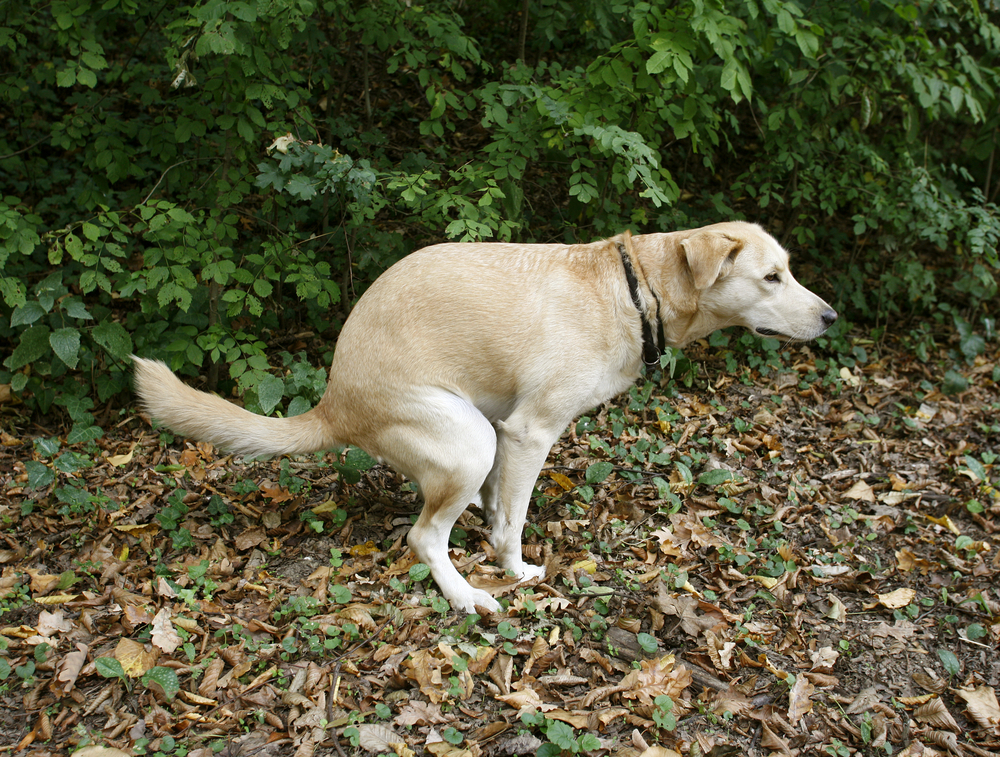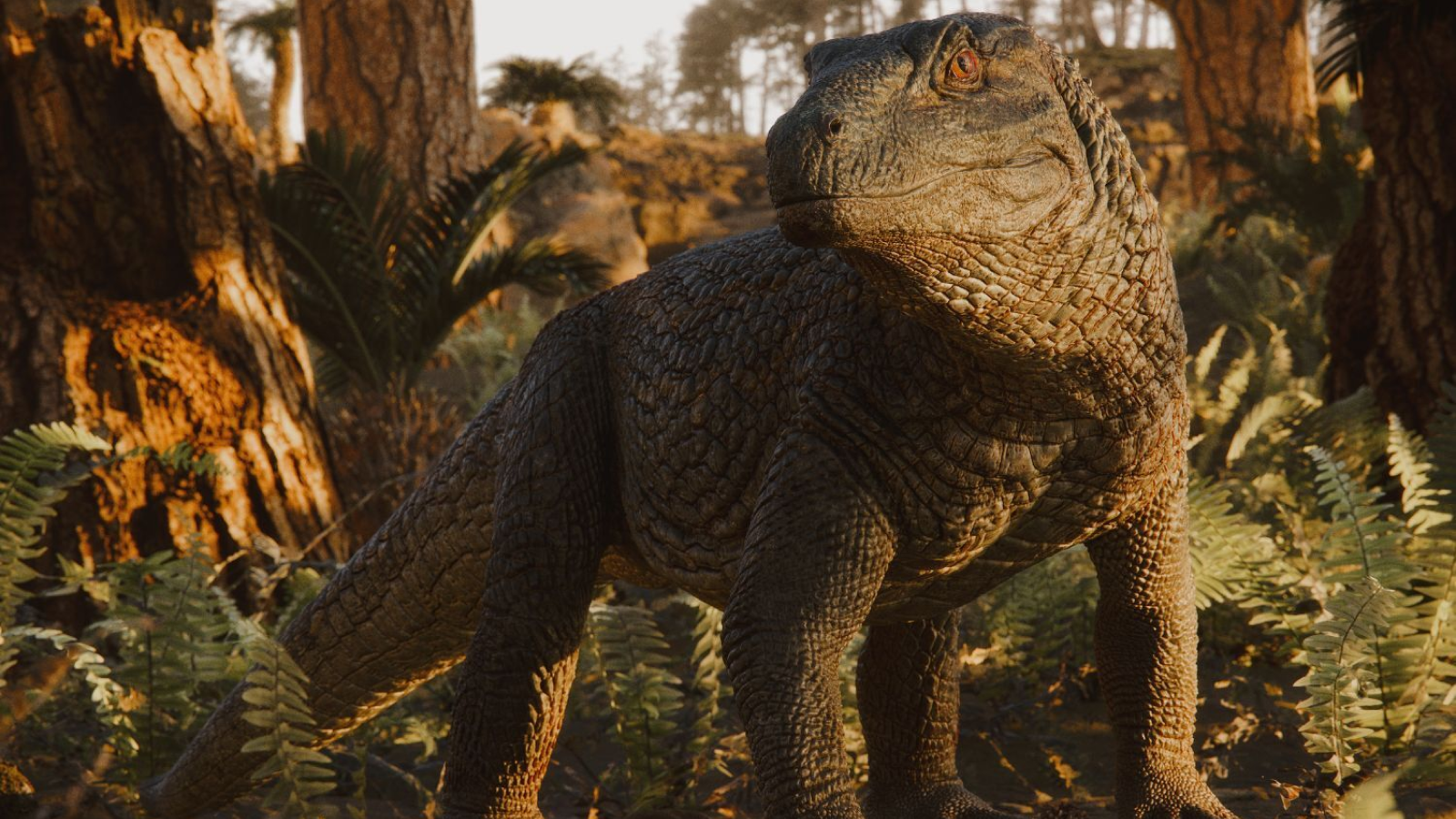
The Poop Problem: What To Do With 10 Million Tons of Dog Waste (Op-Ed)

Susan Freinkel is the author of "Plastic: A Toxic Love Story" and "American Chestnut: The Life, Death, and Rebirth of a Perfect Tree." She has also written for the New York Times, Discover, Smithsonian, Mindful and other publications. This article was originally published by OnEarth magazine. Mahony contributed this article to Live Science's Expert Voices: Op-Ed & Insights.
When I was a kid walking the family dog, I never once thought about picking up her poop. It wasn't something people did in the 1960s and '70s — perhaps because the plastic bags that now overflow our kitchen cabinets had yet to be invented. Today, cleaning up after your dog is the urban norm, so much so that as California considers passing the first state ban on plastic bags, one of the loudest concerns comes from pet owners asking: How will we scoop our dogs' poop?
It's not an idle question. America's 83 million pet dogs produce some 10.6 million tons of poop every year.
That's enough to fill a line of tractor-trailers from Seattle to Boston, one waste removal service has calculated. Add in litter from our more than 90 million cats, and you've got enough pet waste to fill more than 5,000 football fields ten feet deep, according to another poop-scooping company. Indeed cleaning up after our pets has spawned an entire industry with its own professional organization, the Association of Pet Animal Waste Specialists, complete with pun-filled newsletter ("What we doo").
This probably wasn't one of the issues that biologist Eugene Stoermer and ecologist Paul Crutzen had in mind when they coined the term "Anthropocene" to refer to the human impact on the planet. But there's no question that our heavy footprint includes the paw prints of our pets.
True, poop is not exactly an environmental threat on the order of carbon pollution, nuclear waste or a Superfund site. Still, the risk from poop can be more than just a mess on your shoes. Dogs can harbor lots of viruses, bacteria and parasites — including harmful pathogens like e coli, giardia and salmonella. (A single gram contains an estimated 23 million bacteria.) Studies have traced 20 to 30 percent of the bacteria in water samples from urban watersheds to dog waste. Just two to three days of waste from 100 dogs can contribute enough bacteria, nitrogen and phosphorous to close 20 miles of a bay-watershed to swimming and shellfishing, according to the U.S. Environmental Protection Agency. It also can get into the air we breathe: a recent study of air samples in Cleveland, Ohio, and Detroit, Mich., found that 10 to 50 percent of the bacteria came from dog poop.
So while the stakes may be lower than say, radioactive waste, the question remains: What do we do with this s**t?
Get the world’s most fascinating discoveries delivered straight to your inbox.
It's a question that has nagged me for years as I've followed my dog on walks, plastic bags at the ready. Aimee Christy, a shellfish biologist in Olympia, Washington, has also been grappling with it. She's a dog owner herself, but her real concern stems from her work at the Pacific Shellfish Institute. She helps to safeguard the region's clam, oyster and mussel beds, which can be polluted by dog poop. Christy was part of a decade-long campaign in Olympia and surrounding Thurston County to encourage people to "SCOOP IT, BAG IT, TRASH IT." It helped, but not enough. For one month last year, Christy spent many of her lunch breaks picking up dog poop in public parks. She counted her bounty: 1,200 piles of poop. "It was everywhere," she says.
That's because only about 60 percent of dog owners pick up after their pets, according to surveys. Among the excuses offered by the 40 percent who don't pick up: "Because eventually it goes away;" "too much work;" "small dog, small waste;" "it's in the woods;" or, in a reverse NIMBY: "It's in my yard."
Socializing dog owners is the front end of the problem. The back end is what do we do with the poop once it's collected. In most places, it goes to a landfill. There's something unsettling, if not downright disgusting, to think of tons of plastic-wrapped dog turds being entombed underground. What will future civilizations make of our dedication to preserving dog crap?
That unease has helped fuel a booming market in biodegradable dog waste bags. Market leader BioBags sells more than 19 million a year. I've seen dog parks stocked with them. Unfortunately, this seemingly green solution can backfire. The bags are designed to be composted, not landfilled. But in the absence of composting programs — I'll come back to this — many will end up in landfills, where they are more likely to degrade than a conventional plastic bag. "Anything that goes into the landfill and degrades is worse than something that goes in and doesn't," says Jack Macy, commercial zero-waste coordinator for San Francisco's Department of Environment. A compostable bag of poop that degrades in that circumstance would start producing methane, a potent greenhouse gas.
San Francisco has an ambitious goal of achieving zero waste by 2020 — the city already diverts 80 percent of its garbage from the landfill. Dog poop, at four percent of the waste stream, is one of those vexing fractions standing in the way of getting to zero.
Most commercial composters are already processing dog and cat waste that gets swept up in municipally collected yard trimmings.
Flushing it could be an option — the EPA even recommends it. You can buy special bags designed to be flushed down the drain. But as Macy points out, sewage treatment facilities use a lot of chemicals and energy to remove contaminants from human waste; adding our pets' waste could burden some systems and would pose an extra drain on water when there's a drought, as Californians are currently suffering.
Maybe the problem is that we are looking at poop as waste, rather than what it really is: a resource that could — and should — be recycled for compost or energy. (Cat waste is a more complicated matter because felines can harbor a hardy toxoplasmosis parasite you wouldn't want in your compost, and many kinds of kitty litter aren't degradable.) Dog poop, like many other kinds of manure, can be composted — but rarely is. Even cities with curbside programs that compost food scraps and other organic waste discourage people from putting dog waste in their compost bins, because commercial composting facilities don't want it. Toronto's program for composting pet waste (as well as dirty diapers) is a forward-looking exception.
Composting dog waste in a backyard bin can be iffy. It's hard to achieve the temperatures needed to kill off pathogens, so you should never use composted pet waste on plants you'll be eating. But commercial composting facilities are required to keep the compost at hot enough temperatures, for a long enough period of time, to get rid of harmful pathogens. If properly treated, the resulting compost is "perfectly safe," says Will Brinton, president of Woods End Laboratories, a compost research lab in Mount Vernon, Maine. In fact, most commercial composters are already processing dog and cat waste that gets swept up in municipally collected yard trimmings. But none of them like to trumpet the fact, says Brinton. "It's bad for marketing."
A handful of private companies are stepping in to fill the void. GreenPet Composting, a poop-scooping service in Portland, has begun trucking the poop it collects up I-5 to a composting facility in western Washington. In Boulder, Colo., retiree Rose Seeman started EnviroWagg to address the waste "twilight zone that no one is doing anything about." She is currently processing about three tons of poop a year into her "Doggone Good Compost" but hopes to expand the operation. "It's very, very potent."
The same biology that makes poop good for compost also makes it a potential source of energy. It can be anaerobically digested — a process that breaks down organic materials, producing a biogas that can be used for energy and a residue that can be used as a compost on plants. That's what Toronto does with the dog waste it collects through the curbside bins. There have been several experiments with anaerobic digesters at dog parks in the United States. Arizona State University students teamed up with the town of Gilbert to place an underground methane digester in a dog park that draws about 200 animals a day. (They call the project e-TURD.) Eventually, says Macy, San Francisco plans to build an aerobic digester to handle the city's organic waste — including the droppings of its 120,000 dogs.
After researching the options, Christy (the shellfish biologist) is hoping to persuade county officials where she lives to make the investment in aerobic digesters. (You can find her excellent report outlining various options here.) Meanwhile, she jerry-rigged a system to encourage better scooping habits. She set out a trashcan in front of her house where people could deposit their bags of poop every day. For awhile, the system worked wonderfully — the can filled up every week. But even the simplest solutions can go awry. "Somebody stole it," she said.
"Teenagers," she added with a mix of amusement and irritation. "They just can't resist a can of poop."
OnEarth Editor's note: This is the first in a new monthly column exploring the problems, dilemmas, and opportunities posed by the stuff we (or in this case, our pets) make. Follow the author @SusanFreinkel. This article first appeared as "The Poop Problem" on OnEarth.org. Follow all of the Expert Voices issues and debates — and become part of the discussion — on Facebook, Twitter and Google +. The views expressed are those of the author and do not necessarily reflect the views of the publisher. This version of the article was originally published on Live Science.

